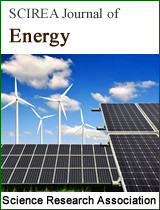Empirical Survey on the Sweetening Process For Sour Gas, A New Technology
DOI: 283 Downloads 15385 Views
Author(s)
Abstract
Many different processes are used to treat raw natural gas to pipeline quality. Sulfur is commonly present as an impurity in fossil fuels. Magnetic field is applied in a fluidized bed which contains nano activated carbon to investigate hydrogen sulfide elimination. Sulfur removal in this way is presented experimentally and theoretically. The rate of mass transfer is introduced as function of gas temperature, amount of balls covered by nano carbon tubes, initial concentration of hydrogen sulfide, gas flow rate and magnetic field. The experimental data are presented and compared with the model results. The effect of hydrogen sulfide in the inlet sour gas on the mass flow rate in investigated in this paper. In addition, the effect of porosity percentage of catalytic bed on the hydrogen sulfide content of outlet gas is evaluated in this paper. The outlet concentration below 4 ppm is acceptable result due to commercial rules. The experimental data are in higher values of hydrogen sulfide comparing with the ones from modeling data.
Keywords
Nano; Hydrogen sulfide; Flow; Field; Temperature.
Cite this paper
Somayyeh Fazeli, Farshad Farahbod,
Empirical Survey on the Sweetening Process For Sour Gas, A New Technology
, SCIREA Journal of Energy.
Volume 2, Issue 1, February 2017 | PP. 1-8.
References
| [ 1 ] | L. Carlos, G. Isabel, B. Irene, D. Luis I,. R. Luis M. Experimental study of SO2 and NOx emissions in fluidized bed oxy-fuel combustion. Fuel Process Techno., 2013; 106: 587–594. |
| [ 2 ] | M. de las Obras-Loscertales, A. Rufas, L.F. de Diego, F. García-Labiano, P. Gayán, A. Abad, J. Adánez, Effects of Temperature and Flue Gas Recycle on the SO2 and NOx Emissions in an Oxy-fuel Fluidized Bed Combustor, Energy Procedia., 2013; 37: 1275-1282. |
| [ 3 ] | W. Kaewboonsong, V.I. Kuprianov, N. Chovichien, Minimizing fuel and environmental costs for a variable-load power plant (co-)firing fuel oil and natural gas: Part 1. Modeling of gaseous emissions from boiler units, Fuel Processing Technology, 2006; 87: 1085-1094 |
| [ 4 ] | A.Irabien, Environmental and economic evaluation of SO2 recovery in a ceramic hollow fibre membrane contactor. Chem Eng Process: Process Inten., 2012; 52: 151-154. |
| [ 5 ] | H. Wang, Sh. Li, F. Lai, B. Wang, Computational Model of Greenhouse Gas Emissions of Power Station boiler Considering Desulphurization, Physics Procedia, 2012; 24: 44-49. |
| [ 6 ] | D.L. Stern, K.E. Nariman, J.S Buchanan, N.A. Bhore, D.L. Johnson, R.K. Grasselli, The Mobil Oil SOx Treatment Process (MOST). Catalytic removal of SOx and H2S from refinery tail gas, Catalysis Today, 2000; 55: 311-316. |
| [ 7 ] | W. Zhou, C.S. Zhao, L.B. Duan, XP. Chen, C. Liang, Two-dimensional computational fluid dynamics simulation of nitrogen and sulfur oxides emissions in a circulating fluidized bed combustor. Chem. Eng. J., 2011; 173: 564-573. |
| [ 8 ] | D. Eow, S. John, Recovery of sulfur from sour acid gas: A review of the technology Environmental Progress. Americ. Institut. Chem. Eng., 2002; 21: 143 - 162. |
| [ 9 ] | D. Kunii, O. Levenspiel, Fluidization engineering. First edition. New York: Wiley; 1991. |
| [ 10 ] | JF. Davidson, Fluidization. First edition. USA: Academic Press; 1991. |
| [ 11 ] | D. Green, R. Perry. Perry's Chemical Engineers' Handbook. 8th edition, USA: Mc Graw Hill; 2007. |
| [ 12 ] | W.Ch. Yang. Handbook of Fluidization and Fluid-Particle Systems. First edition. USA: Taylor & Francis; 2003. |
| [ 13 ] | L.Davidson, Jr Amick, H.Erwin, Formation of gas bubbles at horizontal orifices. AIChE J 2004; 2: 337–342. |
| [ 14 ] | M. Uzi. Principles of chemical reactor analysis and design. second edition. New York: Wiley; 2009. |
| [ 15 ] | O. Levenspiel, Chemical Reaction Engineering. 3th Ed. New York: Wiley; 1999. |

